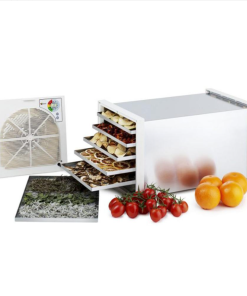Mangrove Jacks CS M12 Kveik Yeast 10g Mangrove Jacks
$ 17,00 $ 10,20
M12 Kveik Yeast is suitable for a range of styles from Norwegian Farmhouse Ales to Pale Ales and IPAs.
- M12 Kveik Yeast works within a wide range of fermentation temperatures, from 25-40°C with an extremely high optimal range of 35-40°C
- M12 leaves other yeasts in the dust, with full attenuation typically achieved within 2-3 days at optimal temperature
- Kveik Yeast is a versatile, top fermenting yeast, suitable for a range of styles from Norwegian Farmhouse Ales to Pale Ales and IPAs
- It retains a neutral flavour character with subtle citrus fruit notes
Read about Kveik Yeast in a bit more detail –
Kveik (pronounced to rhyme with “bike”) simply means “yeast” in Norwegian – and while Kveik yeast is seemingly a new sensation in the craft beer world, Norwegian Kveik yeasts have a long history.
Traditionally used to brew local farmhouse style ales in Norway, they are a relatively new phenomenon on the world brewing stage. There is actually more than one type of Kveik yeast, and each is traditionally a blend of more than one strain.
M12 Kveik Yeast is a single culture yeast that uses an isolate of the most important single strain in the naturally mixed culture ‘Voss’ Kveik blend. This member of the Kveik family of yeast is so called because it originates from Voss in Norway, where the culture has been carefully maintained by Sigmund Gjernes since the 1980s.
Each Kveik yeast has it’s own specific profile, but they are all known for their ability to ferment across a wide temperature range, include temperatures as high as 40°C! Furthermore, unlike most familiar farmhouse style yeasts, which are often phenolic – Kveik ferments with an exceptionally clean taste profile, with just a delicate hint of fruity esters.
These qualities, along with their interesting backstory, have meant Kveik yeasts have become the exciting new trend in the craft brewing world, especially for brewing IPAs – the Voss Kveik being perfect for American style IPAs on account of its restrained orange-citrus flavour profile.
However, their use is potentially even more exciting for the home user, especially those in warmer climes, due to the reduced reliance on cool ambient fermentation temperatures.
| Size | 10g |
|---|
Prompt Shipping and Professional Packing
We offer a broad range of shipping options owing to our long-standing relationships with UPS, FedEx and DHL. Our warehouse staff is highly trained to package your goods exactly as per the specifications we offer. Before shipping your items will be carefully inspected and secured. We ship to thousands of customers daily in different countries. Our dedication to becoming the largest online retailer around the globe is evident by this. These warehouses are situated in Europe in the same way as they are in the USA.
Note that orders containing multiple items are processed according to the specific item.
We will inspect each and every one of the items ordered before shipping. The majority of orders are delivered within 48 hours. The delivery time is estimated to be between 3 and seven days.
Returns
The stock market is always changing. It's not entirely managed by us, as we have multiple organizations, such as the factory and the storage. So the actual stock may fluctuate at any moment. Please be aware that it is possible for your order to be out of stock after you've placed your order.
Our policy runs for 30 days. If it's been longer than 30 days since you purchased your item, we unfortunately can't give you a complete refund or exchange.
The item must not be in use and must be in the original packaging. The item must be in its original packaging.
Related products
Uncategorized
Uncategorized
Uncategorized
Uncategorized
Uncategorized
Estate Series Cabernet Sauvignon (Australia) – Wine Making Kit Distillery King Australia
Uncategorized
Uncategorized
Uncategorized
Uncategorized
Astra Peel-a-ton Automatic Peeler Fruit Peeler and Vegetable Peeler Spare Parts Bundles Astra
Uncategorized
Uncategorized
Uncategorized
Uncategorized
Uncategorized
Uncategorized
Uncategorized
Uncategorized
Uncategorized
Uncategorized
Uncategorized
Uncategorized
Estate Series Cabernet Merlot (California) – Wine Making Kit Distillery King Australia
Uncategorized












































